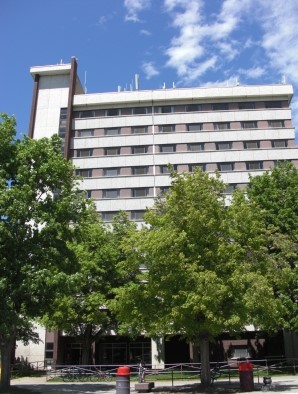It is impossible to predict with certainty the total success of any new, complex project, but public officials strive to do everything possible to lessen risk factors. A feasibility study is one way to examine the practicality of any project. The final report outlines risks and evaluates all aspects of a project including the economic impact, financial considerations, legal components and site location options.
Feasibility projects are costly so when one is commissioned, it is safe to assume that a new project is likely on the horizon – or at least one is under serious consideration. The projects described in this column all have feasibility studies underway so interested private sector contractors would be wise to monitor any of the ones of interest.
City leaders in Twin Falls, Idaho, have approved the funding of a project that will eventually have a cost estimate of somewhere between $45 million and $60 million. The feasibility study will focus on the construction of a new community recreation center for the city. A recommended site location will be one of the requirements. There is high interest in a new public citizen gathering facility. If approved, the building will be designed for athletics, education and various types of community events. Approximately 13 acres will be required because space for future expansion and adequate parking are high priorities. Cost estimates are not yet finalized, and a delivery method has not been determined. The possibility of a public-private partnership has not been ruled out.
The University of Montana, located in the city of Missoula, commissioned a feasibility study focused on a new 600-bed residence tower that currently carries a $105 million cost projection. The study’s final report highlighted an alarming demand feature. Existing housing does not meet current student demand and, with a waitlist of 600 students, the recommendation was to put the project on a fast track. The study endorses the building of 196 new units and a four-story apartment complex as part of the project’s first phase. Construction is scheduled to begin in 2024.
A lakefront connector project in Cleveland, Ohio, has been tagged with a $230 million cost projection. A feasibility study is currently underway. The objective of the study is to evaluate all aspects of the project including how it can best allow access over Route 2. The project would provide benefits for motorists, residents, tourists and local citizens. The master plan includes 60 acres where a park-like pedestrian and bridge project will connect City Hall and much of Cleveland’s urban area to the waterfront. No timeline has yet been released for a project launch.
Currently, a feasibility study is underway in Cedar Falls, Iowa, for a $64 million project to construct a reciprocating engine electric generating plant. The study is scheduled to be completed this summer. The plan will then be to design the project so that it provides relief from rolling blackouts which have become common. A location search is underway, and construction will begin after recommendations are released related to the type of building to be constructed, the necessary substation and transmission systems that will be required, technology to consider, improvements, etc.
City officials in Wilmington, Del., hope to receive federal funding for a new public park which will be constructed on top of a section of Interstate 95. The state’s Department of Transportation will oversee the project and funding has been requested from the federal government’s ‘connecting neighborhoods’ federal grant program. The project would reconnect New Castle County and Cecil County in Maryland. Amenities include walking and biking areas, a playground for children and space for pop-up markets and local vendors.
A feasibility study to evaluate a new Metra Rail expansion in Dekalb, Ill., has concluded. The project has been tagged with a cost of somewhere between $250 million and $388 million and when finished, it would provide a new service connection from Dekalb to Elburn. The report outlined capital costs that should be anticipated and suggested that funding could come from the creation of a mass transit district or to petition the city to become part of the Chicago Regional Transportation Authority. That option would require an estimated cost of $8 million to $12 million annually but it is less costly than other options. Northern Illinois University would benefit significantly since it is the city’s largest employer and the only state university in Illinois without a commuter passenger train.
Feasibility studies are done for all types and all sizes of projects. A recent study that just began in Pulaski County, Ky., was focused on a new detention center that could cost as much as $53 million. The county’s current detention center has been housing inmates well over 200% of the recommended capacity for several years. With needs that are increasing, county officials authorized the study to consider various alternatives. Once final decisions are made on these options, the site location will be determined.
Another finalized feasibility plan has been presented to officials in Rotterdam, N.Y. The study focused on a project to renovate and establish a police station and courthouse in an old Grand Union Station building for $8 million. While final approvals have not been announced, it appears that this facility and location are more attractive financially than other options. If that is the final decision, bonds could be issued this summer and a project launch would follow.
Once upcoming opportunities are discussed publicly, which happens when feasibility studies are announced, collaborative conversations between public and private sector individuals usually follow quickly. Government leaders almost always remember which private sector firms are spending time asking questions about the project, making themselves highly visible, and being willing to get involved in every way possible. Strange as it may sound, contractors have trouble getting noticed or remembered if there is no interaction before projects are launched.







 RSS Feed
RSS Feed